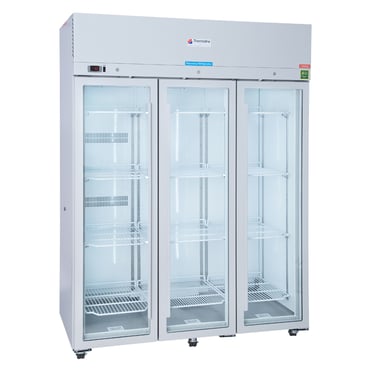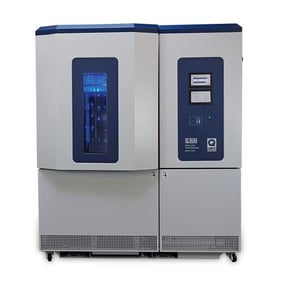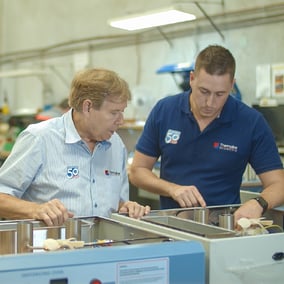
The proper storage of samples, reagents and standards, whether biological materials or something else, is an important aspect of any laboratory. When biological samples are maintained at ambient temperature, they generally deteriorate with time, but if they are subjected to numerous freeze-thaw cycles, they may lose their integrity. If the sample was preservative-fixed, it can be kept at room temperature. However, as a result, the DNA in the sample is likely to deteriorate quickly.
The optimal storage temperature for a biological sample or reagent is frequently determined by the type of reagent or biological material, the solution in which it is suspended, the sample's intended use, and the length of time it will be stored. Benchtop/room temperature, refrigerated, freezer, ultra-low freezer, and cryogenic freezer storage are the most frequent temperatures.
15°C to 27°C (Room Temperature)
Biological materials, such as paraffin-embedded tissues or biological specimens that have been preserved using a preservative such as Bouin's, formalin, or alcohol, may typically be maintained at room temperature in a climate-controlled setting. A refrigerated incubator is the best way to maintain room temperature, as it won't be liable to extreme changes if the building's air conditioning is switched off over a weekend.
2 to 8 °C (refrigerated)
While low temperatures aren't good for the long-term storage of biological reagents like enzymes and antibodies like vaccines, they are suitable for short-term storage. That is why having a high-quality vaccine refrigerator in your laboratory is critical to assist you with storage. Thermoline's range of vaccine storage and laboratory fridges are registered on the ARTG list and can be used to meet this requirement.
-20ºC (Freezer Storage)
Many biological materials, especially in non-frost-free equipment, can be maintained at normal freezer temperatures (these cycles require brief periods of thaw to prevent frost accumulation and can degrade biological materials). Thermoline offers both auto-defrost and manual defrost freezer cabinets.
-80 (Ultra-Low Freezer Storage)
For the long-term preservation of biological materials, ultra-low -80oC freezers are a viable choice. Nucleic acids, proteins, endocrine compounds, and many other biological molecules are not degraded at ultra-low temperatures. Thermoline supplies the Haier brand -86°C freezers.
-150ºC to -190ºC (Cryogenic Freezer Storage)
Cryogenic freezer storage also happens but is less common.
Here are some general guidelines to help you keep samples at the right temperature in your lab:
Use Appropriate Equipment:
Invest in high-quality refrigerators, freezers, and incubators designed for laboratory use. These appliances often have precise temperature control and monitoring features.
Choose equipment with alarms that can alert you if the temperature goes out of the specified range.
Regular Calibration:
Regularly calibrate your temperature-controlled equipment to ensure accuracy. This is important for maintaining the integrity of your samples.
Temperature Monitoring:
Install temperature monitoring devices such as data loggers or thermometers in critical storage areas. This helps ensure that temperatures remain within the desired range.
Set up a system to receive alerts (visual or audible alarms, emails, or texts) if temperatures deviate from the acceptable range.
Temperature Zones:
Organise your lab space with consideration for temperature zones. For example, keep heat-producing equipment away from refrigerators or freezers to prevent temperature fluctuations.
Proper Storage:
Store samples in the correct sections of refrigerators or freezers. Some units have different compartments with slightly varied temperatures, so be aware of these variations.
Backup Systems:
Have backup systems or alternative storage options in case of equipment failure. This could involve having a backup generator or alternative storage facilities.
Training and Documentation:
Train laboratory staff on proper sample handling and storage procedures, emphasising the importance of maintaining temperature integrity.
Have standard operating procedures (SOPs) for sample storage and handling. Document any deviations from established procedures.
Emergency Plans:
Develop contingency plans for power outages, equipment failures, or other emergencies. These plans should include steps to take to protect samples and minimise the impact on research.
Regular Maintenance:
Schedule routine maintenance for temperature-controlled equipment. This includes cleaning coils, checking seals, and ensuring that fans and compressors are functioning properly.
Sample Labeling:
Clearly label all samples with information such as required temperature, date of storage, and any other relevant details. This helps ensure that samples are placed in the correct storage conditions.
By implementing these practices, you can help maintain the integrity of your samples and ensure that your lab work is not compromised by temperature fluctuations. Always refer to specific guidelines and recommendations for the types of samples you are working with, as different materials may have different temperature requirements.
Contact Thermoline for all of your hot or cold temperature requirements.






